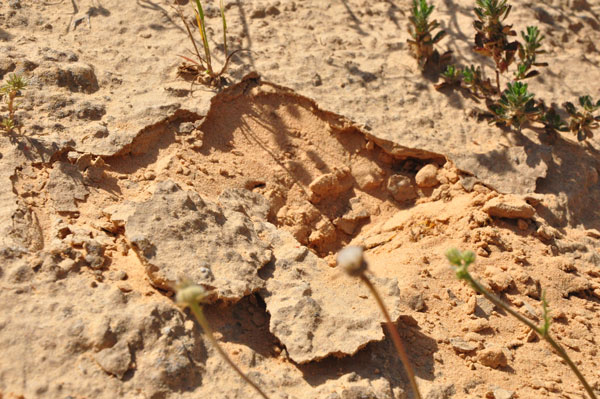The surface of sandy deserts is one of the most inhospitable environments on the planet. Conditions in the crusts include wide temperature amplitudes, frequent hydration/dehydration cycles, combined with extremely high illumination intensities equivalent to more than double anything experienced in central Europe. Nevertheless, some sturdy and adapted life forms manage to grow in this harsh environment. Photosynthetic members of this crust microbial community are able to carry out photosynthesis and to grow for a short time in the morning, before morning dew has evaporated, and after sunlight has already appeared.
Recently, a small green alga was isolated from the Negev desert, one of the driest and hottest in the world. This alga, named Chlorella ohadii after the late famous Israeli botanist Itzhak Ohad, can maintain productivity in the face of twice full sunlight. This is challenging due to a process that is technically termed photoinhibition, which involves the destruction of the protein cores of the photosynthetic apparatus. With increasing supply of light, the probability of “overload” on the photosynthetic electron flow increases, and with it the frequency of this destructive process, mediated by reactive oxygen species (ROS). Photoinhibition and abiotic stress significantly lower global photosynthetic productivity and, thus, ecosystem stability and crop yield, especially in hot and/or dry climates. These losses can be expected to become even more serious in the next decades as climate change progresses.
In our study, we showed that rather than succumbing to the destructive effects of excess light, C. ohadii performs extremely rapid poising of its redox status, through post-translational regulation of protein kinases and reactive oxygen- and heat-shock- factors, and novel thylakoid remodeling. We also showed that C. ohadii maintains surplus enzymatic capacity in low light, allowing a rapid increase in photosynthesis and growth to once it is suddenly exposed to extremely high light, representing an important adaptation to the ecological niche in which it grows with only brief periods when a combination of light and water availability allow photosynthesis and growth.

Figure: Desert biological sand crusts from Nizzana area in the harsh Negev desert from where the subject of this research has been isolated. Photo credit: Haim Trebes.
This work also highlighted the potential of C. ohadii as a model for basic research and biotechnology. C. ohadii is emerging as a new green algal model to address different aspects in photosynthetic eco-physiology, cell and molecular biology. Further, C. ohadii is currently being used as a gene source for the development of improved-yield crop plants. Facing global climate change, and constantly increasing demand for biomass production, the potential of exploiting this alga for biotechnology is self-explanatory.


































